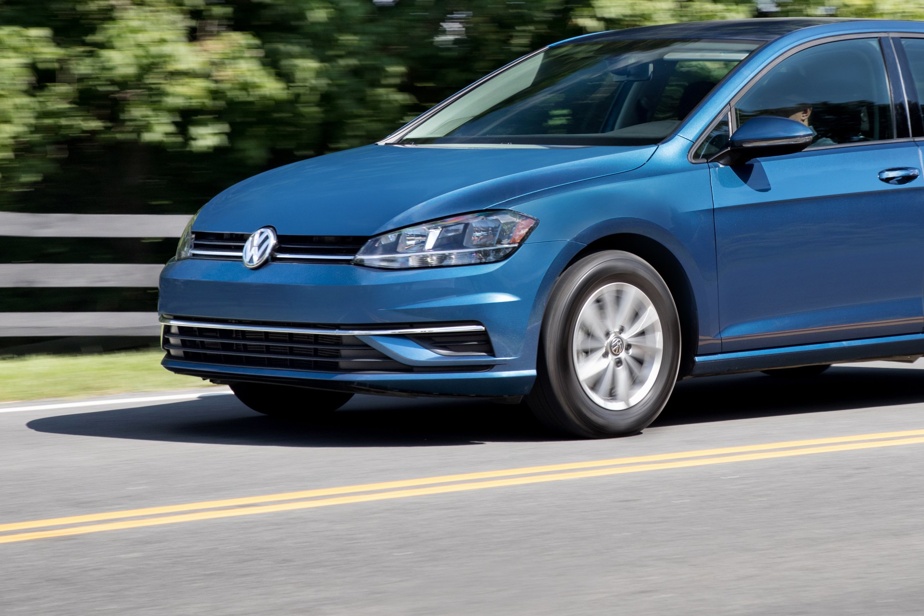Environmental footprint
We are a couple and we are debating the best environmental option regarding the purchase of an electric car. We do 12,000 km on average per year. We have a 2019 Volkswagen Golf Highline. My opinion is that in terms of the environment, it is preferable to keep the Golf until it is completely worn out (I keep my cars for 15 years on average) and to proceed with the purchase of an electric car afterwards. The other option would be to sell the Golf and buy an electric car now. What do you think ?
M.L.
Your reasoning is extremely logical. Whether thermal, hybrid or electric, extending the lifespan of vehicles remains the best option in terms of consumption of natural resources or emissions harmful to the environment from a planetary point of view, taking into account the entire life cycle of vehicles. In short, keep your Golf.

PHOTO PROVIDED BY SUBARU
The Subaru Solterra
Know how to wait
I have a 2016 Subaru Impreza with 56,000 km (purchased used in 2021) that I love, but has a computer problem. I am being asked $1600 plus taxes to repair it at my dealership. The repair seems quite technical, another mechanic asks me for a similar price. My partner has a 2020 Crosstrek with almost 80,000 km. The electric Subaru Solterra would be accessible before subsidies are no longer available. Knowing that the cars will need to be changed in a few years and that in the near future we will only own one car, should we sell one of the two cars and immediately acquire the Solterra before the subsidy is no longer available? Or would it be better to keep them for a few more years and hope that the prices of electric cars drop a little? We need four-wheel drive to “ride” our house.
Elaine B
The problem may well be technical, but does your mechanic also offer you the option of a recycled part, if one exists, of course? We suggest you request a quote from another workshop. One thing is certain, despite its age, your current vehicle has very little mileage and, if possible, we suggest you keep it for a few more years. Ditto for your spouse’s Crosstrek. The Solterra is undoubtedly an interesting electric vehicle in several respects, but not the most competitive electric vehicle in its category. So we suggest you wait a few more years.

PHOTO BRIAN KAISER, THE NEW YORK TIMES ARCHIVES
A Hyundai Ioniq
The question of the little “e”
In your report on the Ioniq 5N, you say that its consumption is 3 Le/100 km. The same would apply to the electric Acura while the Mustang would use 2.6 Le/100 km. As these are electric cars, I don’t really understand this consumption index. Can you help me ?
Jocelyn B.
This Le/100 km is sure to get people talking. We have been using it for some time now to allow our readers to establish points of comparison with vehicles powered by an internal combustion engine. This standard is also used by the Canadian government which converts the values of electrical energy consumption expressed in kilowatt hours per 100 kilometers into liters of gasoline per 100 kilometers. One liter of gasoline contains energy equivalent to 8.9 kWh of electricity.

PHOTO PROVIDED BY AUDI
2022 Audi RS e-Tron GT
Why so much power?
Have we fallen on our heads? All this slew of information increasingly focused on the acceleration of electric vehicles to help mourn the loss of the thermal engine. Put this in line with the impulsiveness and poor judgment of drivers observed time and time again when I hit the road. Why not prioritize autonomy and a decent price rather than the adolescent hustle and bustle of power?
Pierre P.
You are quite right. What’s the point of all this power? It does not correspond to the speed limits imposed on our roads. It has the unfortunate tendency to wear out tires prematurely. And finally, it is not at all mastered by a (strong) majority of motorists. So why ? Essentially to convince, first and foremost, those motorists who fear losing out by switching to electromobility.
